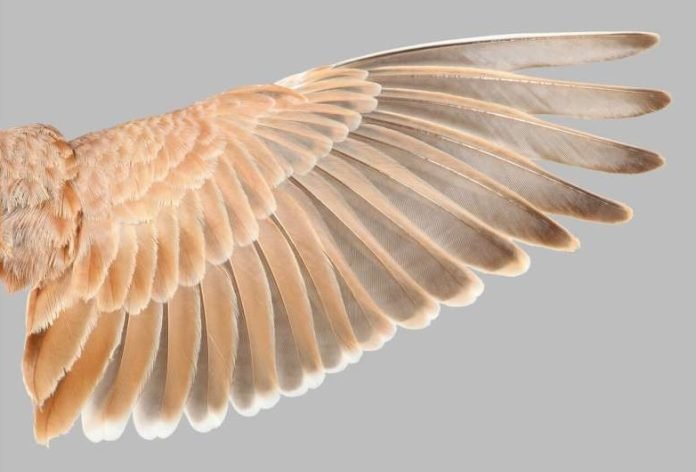
In an intriguing journey through time, scientists have unlocked new secrets about the evolution of flight in birds, tracing back to their dinosaur ancestors.
This exploration into the past has led to the discovery of specific feather characteristics that distinguish flying birds from their flightless counterparts.
Published in the journal PNAS, this study delves into the mysteries of how flight first emerged among dinosaurs and identifies which of these ancient creatures could take to the skies.
Birds, as we know them, are the modern descendants of a group of dinosaurs that managed to survive the catastrophic asteroid impact 66 million years ago.
But the story of flight begins much earlier, within a group of dinosaurs known as Penneraptorans. These ancient beings started to develop feathers well before they could fly.
Initially, feathers might have served purposes such as insulation or attracting mates, as seen in species like the Velociraptor, which was feathered but flightless.
Without the ability to travel back to the Cretaceous Period, scientists rely on fossil evidence to piece together the puzzle of flight’s origins.
The size and shape of the bones, along with the structure of preserved feathers, offer clues about which dinosaurs were capable of powered flight. For instance, the asymmetry of long primary feathers on the wings is a trait found in flying birds but not in those that are flightless.
This quest led Jingmai O’Connor, a paleontologist at the Field Museum in Chicago, and Yosef Kiat, a postdoctoral researcher, to examine the feathers of hundreds of birds preserved in museum collections worldwide.
Their investigation revealed a consistent pattern: all flying birds have between nine and eleven primary feathers. This simple yet previously unnoticed rule sheds light on the diversity of flight styles found in modern birds.
The study not only looked at living bird species but also examined 65 fossil specimens, representing 35 different species of feathered dinosaurs and extinct birds.
This comparison allowed the researchers to infer the flying capabilities of ancient birds and their dinosaur ancestors.
For example, the dinosaur Caudipteryx, with nine primary feathers but almost symmetrical ones, likely had a flying ancestor, even though it could not fly itself.
These findings suggest that the ability to fly evolved once among dinosaurs, sparking debate among scientists about the multiple origins of flight.
The study underscores the importance of integrating paleontological data with observations from existing birds to gain insights into evolutionary processes.
Feathers, one of the most fascinating evolutionary developments among vertebrates, played a crucial role in the success of theropod dinosaurs, including birds.
Understanding how flight and feathers co-evolved contributes significantly to our knowledge of why birds and their dinosaur ancestors became one of the most successful vertebrate lineages on Earth.
This research not only enlightens us about the past but also enhances our appreciation for the diversity and complexity of life on our planet.
The research findings can be found in PNAS.
Copyright © 2024 Knowridge Science Report. All rights reserved.



